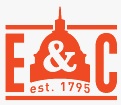 Hearing Description:
Hearing Description:
The Health Subcommittee held a hearing to examine the state of medical mobile technology in relation to a new regulator framework being developed in conjunction with the FDA. Witnesses from the health IT industry testified the current legislation being developed would promote innovation while also maintaining patient safety and privacy.
Hearing Date: November 19, 2013
Hearing Summary: Prepared for AAPS by the Market Institute
The Health Subcommittee recently held a hearing to discuss the federal regulations and oversight of mobile medical apps and health software. Chairman Joe Pitts (R-Penn.) said in his opening statement that in September, the FDA issued a final guidance ruling that health software was a medical device, yet in reality, it is not a medical device. Industry members have voiced concerns that regulator guidance surrounding medical devices is important, but Congress could shephard the effort by issuing new tools for the FDA to use. That can start with properly defining what technologies are for the purposes of regulation. In his opening statement, Fred Upton (R-Mich) said he commends the FDA for stepping in and seeing the need for regulation in the medical device market, but also knows that they are presently ill-equipped to do so. He hopes that the bipartisan proposal submitted in this committee will be taken seriously by the FDA.
The lone witness on the first panel, Dr. Jeffrey Shuren, Director at the Center for Devices and Radiological Health, FDA testified in his opening statement that mobile medical application developers need a clear and predictable understanding of the FDA’s expectations. Mobile apps span a wide range of health functions, but most are inherently not dangerous. However, some regulate drug infusions or computed tomography and need regulations. The agency would like a framework to take a risk-based, focused approach to the oversight of a small subset of medical apps that could pose a risk to patients.
The first witness on the second panel, Mike Marchlik, VP, Quality Assurance and Regulatory Affairs at McKesson Technology Solutions testified in his opening statement his company supports the pending legislation, the SOFTWARE Act. The law would provide for a regulatory framework for medical devices and software that are currently not covered. The existing regulations are not satisfactory in terms of providing enough oversight over health software. The SOFTWARE Act would create three new distinct categories of Health IT: medical software, clinical software, and health software.
The second witness on the second panel, Jim Bialick, Executive Director at Newborn Coalition testified in his opening statement the first step in addressed the regulatory needs of mobile medical apps is updating the definition of medical devices to those that only pose a high risk to patients. Next, requiring HHS to establish an office that would act as a gatekeeper to decide whether medical devices/software are directed to the FDA or to newly created private certifiers. Collaboration between regulators and Congress will be critical in identifying where the law need updating.
The third witness on the second panel, Zachary J. Lemnios, VPt, Research Strategy at IBM Research testified in his opening statement IBM is behind the government establishing a regulatory body that promotes innovation but also protects the safety of individuals. IBM encourages Congress and the Administration to work together to ensure a regulatory framework that promotes this innovation while respecting patient safety. They support the Blackburn-DeGette bill.
The fourth witness on the second panel, Robert Jarrin, Senior Director, Government Affairs at Qualcomm Incorporated testified in his opening statement that as mobile technology continues to expand, the need for regulation of potentially harmful Health IT will grow. After two years the FDA delivered on its promise: a deregulatory and practical roadmap for the mobile health industry. There are dozens of references throughout the final guidance that bring much needed clarity on what it is, what is not, and what will not be regulated. Close collaboration between the FDA, ONC, and FTC are essential to the establishment of consistent standards and requirements for industry.
The fifth witness on the second panel, J. Leonard Lichtenfeld, Deputy Chief Medical Officer at American Cancer Society, Inc. testified in his opening statement that while they are hopeful of the promising technology coming out of mobile medical apps, the expectations must be tempered by the potential dangers of any new medical device. Any new regulatory framework needs to be fluid. Technology is advancing at a far greater pace than any oversight could keep up with.
Hearing Website:
http://energycommerce.house.gov/hearing/examining-federal-regulation-mobile-medical-apps-and-other-health-software
Links to Testimony:
Jeffrey E. Shuren, M.D., J.D.
Director Center for Devices and Radiological Health Food and Drug Administration
Mike Marchlik
Vice President, Quality Assurance and Regulatory Affairs McKesson Technology Solutions
Jim Bialick
Executive Director Newborn Coalition
Zachary J. Lemnios
Vice President, Research Strategy IBM Research
Robert Jarrin
Senior Director, Government Affairs Qualcomm Incorporated
Leonard Lichtenfeld
Deputy Chief Medical Officer American Cancer Society, Inc.




